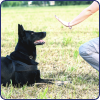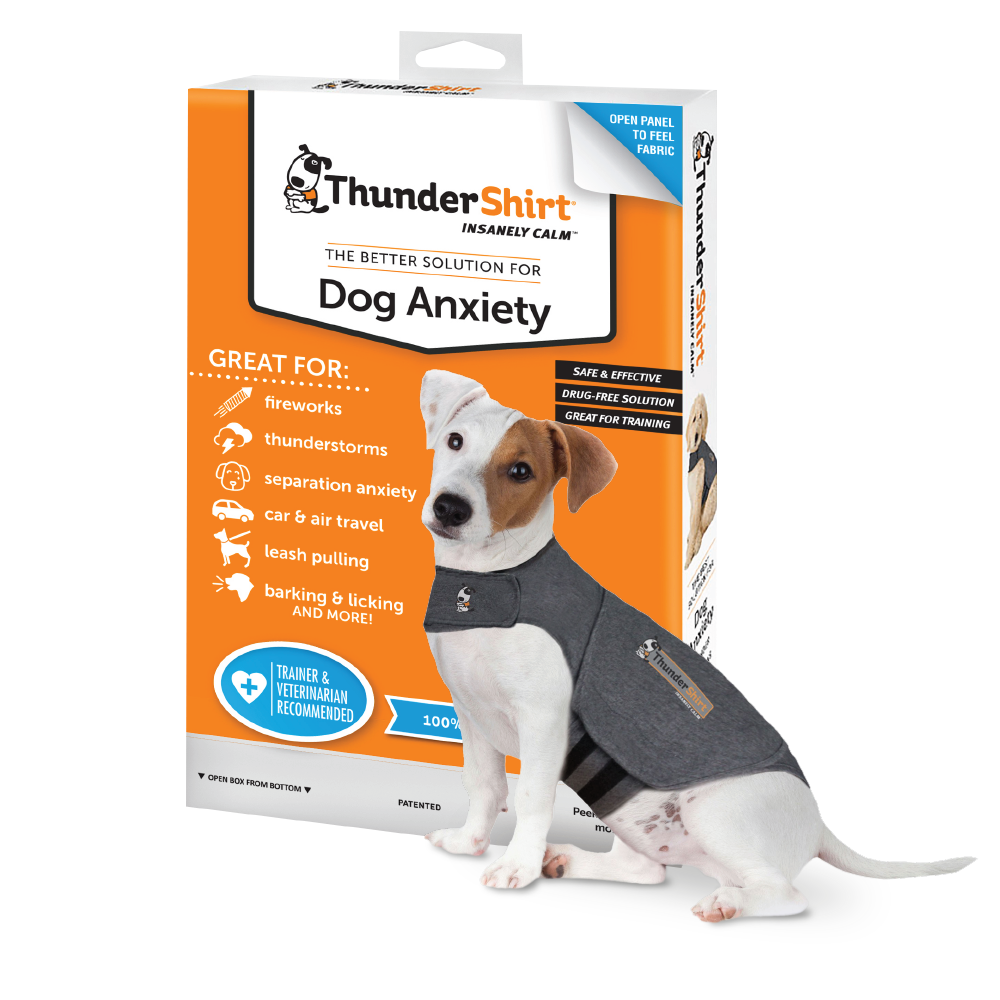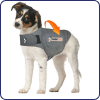
A Dog’s Sense Of Touch: Happy Dog Expert Explains
Have you ever wondered to yourself, “How do dogs experience the world around them?”. If you have, you’re not the only one questioning what senses dogs have! It’s an important question too. In today’s society, pets are family: we love them and care for them on an intimate level. Yet in order to understand their needs, we need to understand both how they communicate with us and how they perceive the world.
This blog is the fourth of a five-part series delving into a dog’s five senses and exploring how dogs sense their surroundings. We've already covered Vision, Smell and Taste so in today’s blog, we’re looking at how dogs feel touch!
By Amy Learn, Behaviour Veterinarian - Chief of Staff of Clinical Behavioural Medicine at the animal behaviour wellness Center in Richmond, Virginia
A Dog’s Sense Of Touch
A dog’s sense of touch is a very different concept to a human’s. From an academic standpoint, a human’s sensory input relates to touch, temperature, pressure, and noxious stimuli, as well as helping the brain determine where body parts are in space. Receptors on the skin and in other tissues relay information via nerves and the spinal cord to the brain by way of a specialised nociceptive pathway. This enables an individual to interpret a sensation and determine how to respond.

Interestingly, humans have many more touch receptors than dogs, and consequently our tactile sense is fine-tuned – especially in our fingertips! Dogs on the other hand have a more generalised touch sensation. They do not assess things by picking them up with their paws, and instead use their mouths to grab and lift. They then combine this sense with input from other dog senses to gather information. In contrast to commonly held assumptions, however, this does not mean that dogs do not feel pain.
MCIR Gene For Pain
Dogs are sentient beings: though a dog’s sense of touch may be less than a human’s, they still feel pain and specific emotions just like every other creature. That said, the exact amount of pain may be on an individual spectrum as some animals are considered more stoic than others – though even this is up for debate! It’s arguable that illness and injury can reduce a dog’s chances of survival in the wild, so they may hide their pain until they can no longer compensate. This may be visible in dogs as a decrease in activity, hiding, interacting less often, or even an increase in panting, agitation, or aggression.
Interestingly, there may be a genetic reason for dogs feeling pain differently, though this is still being researched. In humans, the melanocortin-1 receptor gene controls skin pigment, hair colour, and sensitivity to sunlight. Research has shown that humans with certain variations of this gene have a lower threshold for pain and an increased need for anaesthesia. Likewise, this gene has recently been identified in some lines of Labrador Retrievers. Ongoing research is looking for other genetic links between certain breeds of dogs, a dog’s senses, and their pain sensitivity.
Vestibular System and Balance
Another way that dogs experience the world is with their vestibular system. This is the body’s mechanism to maintain posture and balance. When I think about dogs, I see them as rugged athletes that chase and weave, narrowly avoiding trees and other obstacles. They are truly built for performance! The spine is flexible and allows a varying array of movement, while the tail acts as a rudder to keep their trajectory true.

Mammals have a unique system called the vestibular apparatus within the inner depths of their ear canals. This includes 3 semicircular ducts containing a special fluid. It is the coordination of the movement of the fluid within these ducts that determines a dog’s sense of balance.
Thermal radiation
Similar to human fingertips, the hairless portion of the tip on a dog’s nose is one of the most highly innervated parts of the body. A recent study was organized to determine if a dog’s nose sensitivity had any more specialised purposes. Other vertebrates use their nose to detect thermal and chemical stimulation which can be used for food discrimination, or even to guide movement. Dogs were found to detect weak thermal radiation with their sense of touch through the nose, but the study did not determine what that information was used for.
Magnetic tracking
Humans use magnetic fields to navigate in the wilderness and, aside from the stars, this was one of the first ways for explorers to find their way. Likewise, this is another answer to how dogs experience the world. Research has determined that many mammalian species use magnetic fields to navigate, and dogs have been able to orient themselves to their environment by their ability to sense and interpret magnetic fields.

Conclusion
The sense of touch as we think about it in humans is markedly different than in our pets. For example, humans utilise a very developed sensation of touch in our fingertips for sensory input. When it comes to a dog’s sense of touch, however, they do not use their paws for the same sensory exploration. Instead, they utilise other specialised techniques such as enhanced neural development in their nose, their vestibular system, and the ability to interpret magnetic fields. It is important to remember that even though dogs process touch sensation differently than people do, they still feel pain and experience emotional distress that humans might themselves associate with touch sensation.
Are you interested in learning more about what senses dogs have and how they experience their surroundings? Check out the rest of the series on dogs’ senses from Amy, as well as all our Happy Dog Expert articles! You can also get in touch to ask any questions, or stay informed with our latest tips, advice, and Q&As by signing up to our newsletter.
Additional Resources:
Carlson, N. R. (2012). Physiology of behavior. Pearson Higher Ed.
De Lahunta, A., Glass, E. N., & Kent, M. (2014). Veterinary Neuroanatomy and Clinical Neurology-E-Book. Elsevier Health Sciences.
England, R. W. (2008). W. Lowrie 2007. Fundamentals of Geophysics, x+ 381 pp. Cambridge, New York, Melbourne: Cambridge University Press. Price£ 70.00, US 70.00 (paperback). ISBN 9780 521 85902 8; 9780 521 67596 3 (pb). Geological Magazine, 145(4), 601-602.
Hart, V., Nováková, P., Malkemper, E. P., Begall, S., Hanzal, V., Ježek, M., ... & Burda, H. (2013). Dogs are sensitive to small variations of the Earth’s magnetic field. Frontiers in Zoology, 10(1), 1-12.
Perez TE, Mealey KL, Burke NS, Grubb TL, Court MH, Greene SA. Relationship between the melanocortin-1 receptor (MC1R) variant R306ter and physiological responses to mechanical or thermal stimuli in Labrador Retriever dogs. Vet Anaesth Analg. 2017 Mar;44(2):370-374.









































